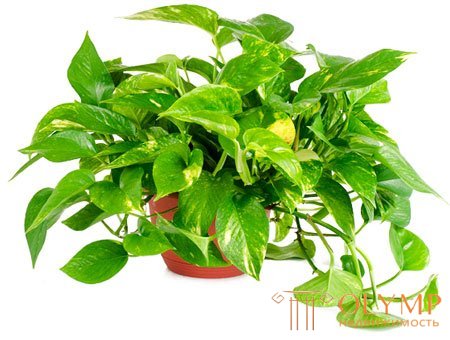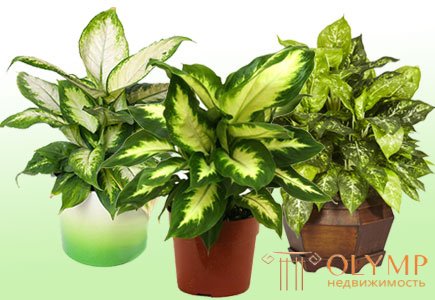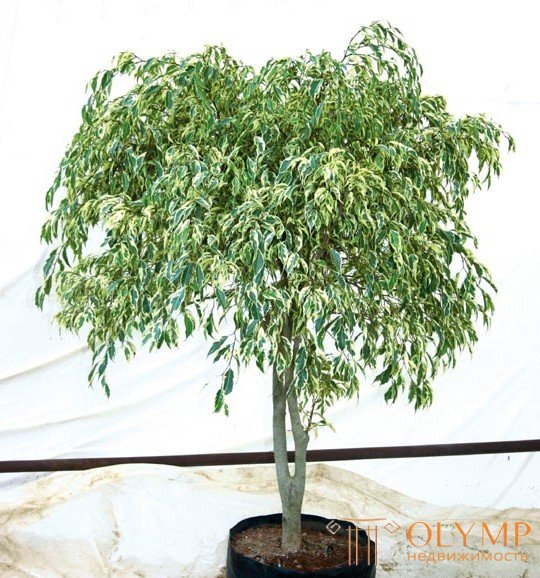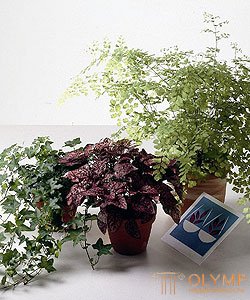
The history of home gardening is rooted in ancient times. The first mention of the significant results of growing plants indoors refers to the XIII century. The modern range of indoor plants evolved over two centuries. In former times, people surrounded themselves with flowers, guided by the concepts of beauty, practicality (for example, the cultivation of citrus fruits for the kitchen). Today, the desire to improve the ecology of their homes has been added. We are trying to acquire beautiful flowers that absorb all the harmful, produce oxygen, and also have a positive effect on us with our biofield. For example, in modern panel houses, the humidity of the air is much lower than normal. In this case, we acquire tsiperus. This plant is very fond of moisture, and put a pot with him in a pan with water. Such pallets with any moisture-loving plants perfectly affect the condition of the air in your apartment. Anthurium, arrowroot, monstera, sanseviera improve water-gas exchange in the room.
The well-known geranium disinfects and deodorizes the air, helps with headaches. Many of the indoor flowers have phytoncidal properties. In the room where there are citrus, rosemary, myrtle, chlorophytum is much smaller than microbes. Asparagus absorbs heavy metal particles. Coniferous plants make the air fresh and easy to breathe. If exhaust gases penetrate through the open windows, air will improve gerberas and chrysanthemums. Ficus benjamin and dieffenbachia are real biofilters when it comes to toxins released by, for example, varnishes (xylene and toluene). And fern nephrolepis, philodendron, chlorophytum will help against the known formaldehyde. But let's not idealize the plants, they also have their disadvantages. For example, ficuses and violets in the sunlight absorb carbon dioxide and emit oxygen, and at night - vice versa. Therefore, you should not actively breed them in the bedroom or children's room. The first place for harmfulness among indoor plants can be safely given to the representatives of the aroid family.


The most common of them are aglaonema, alokaziya, anthurium, dieffenbachia, zantedeskia, zamiokulkas, caladium, taro, monstera, syngonium, spathiphyllum, philodendron, epipremnum. These plants have poisonous juice and it is better not to keep them in the house where there are small children, small domestic animals and birds. And, in general, with regard to the health benefits, all that pleases is very useful to a person.

And there are plants that are certainly useful to everyone and always.
Chlorophytum.  This plant - the first among green friends assistant person. This amazing creation not only favorably affects the energy of the house, but also purifies the air from bacteria and saturates the atmosphere with oxygen. Shaggy hats Chlorophytum easily survive in the darkest and darkest corners of the dwelling, feeding on the stagnant energy that accumulates there - and in return they give the owner a feeling of being light.
This plant - the first among green friends assistant person. This amazing creation not only favorably affects the energy of the house, but also purifies the air from bacteria and saturates the atmosphere with oxygen. Shaggy hats Chlorophytum easily survive in the darkest and darkest corners of the dwelling, feeding on the stagnant energy that accumulates there - and in return they give the owner a feeling of being light.
Myrtle. This is another common friend and helper. This tree saturates the air with phytoncides, which destroy pathogens and have a healing effect on the respiratory tract. The energy of the myrtle is favorable for life and love, but attention: in a house where people often quarrel, the myrtle can simply dry out, even if properly cared for. Where myrtle grows ordinary, half the number of pathogens. 
Lemon, gardenia, room jasmine will not only please the eye, refresh and purify the air, but also be able to energetically support us. In addition, they can strengthen the immune system. And do not look for a place for them in the living room: these plants should stand in the bedroom so that you can “charge” from them all night.
Game: Perform tasks and rest cool.12 people play!
Play gameNightmare of the cold months - nervous ailments: stress and depression, insomnia, headaches. Here the best helpers are passionflower, bay tree and hibiscus. It is not necessary and even undesirable to put them in the bedroom: for these plants you need to find the most lighted place in the house and admire them every free minute.
Euphorbia is needed in a house where there are people suffering from severe chronic illnesses: it increases the body’s resistance and improves mood.
Fuchsia is the best friend of older people: it strengthens the spirit and gives hope.
Fat woman  popularly known as the “money tree,” not only attracts the energy of abundance into the house, but also perfectly supports the weakened body during illness.
popularly known as the “money tree,” not only attracts the energy of abundance into the house, but also perfectly supports the weakened body during illness.
Geranium absorbs waste, moisture, and refreshes a musty room. Along the way, it helps to relieve internal stress.
Game: Perform tasks and rest cool.12 people play!
Play gameChrysanthemum has the ability to create an energy curtain from the "evil eye" and a violent energy-information exchange.
Ferns serve as room ozonizers, in this respect they are loyal friends of the family.
Peperomia, Tradescantia reduce the risk and course of cancer for the owner. They are all the more effective, the larger the copy. The most effective plants with standing stems. And from the Tradescantia, those varieties that have thick and large fleshy leaves have the greatest power.
Что бы оставить комментарий войдите
Комментарии (0)